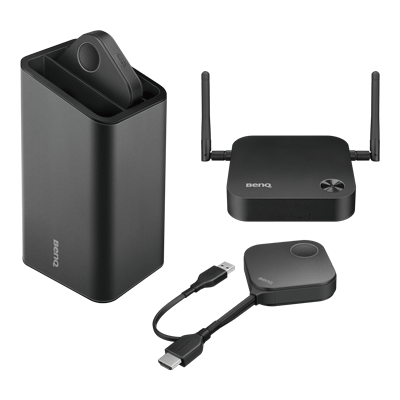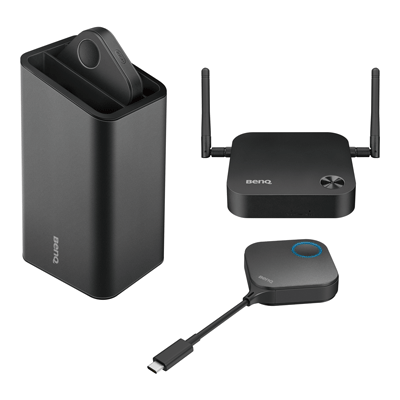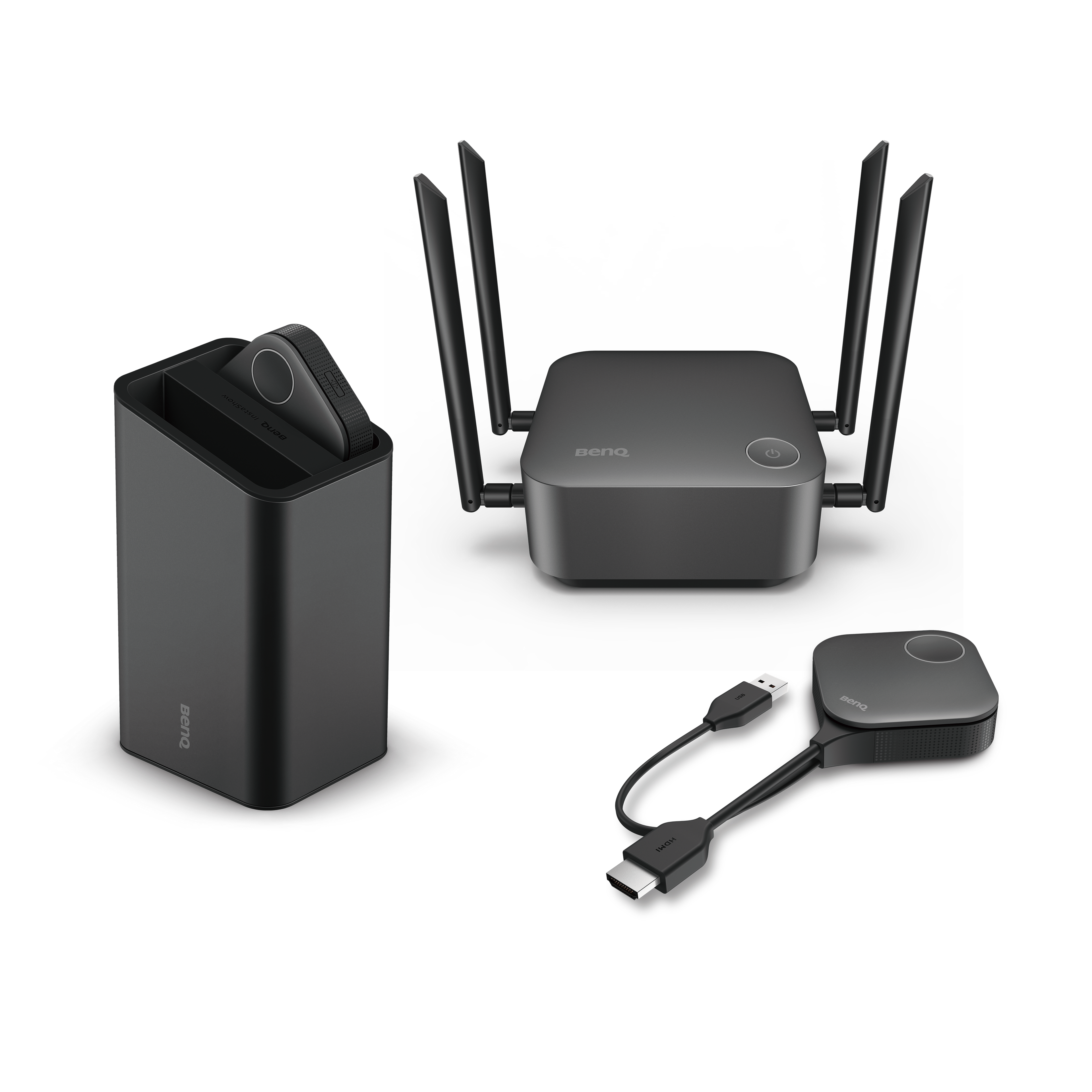How to Connect Your Laptop to TV? HDMI and Wireless
- BenQ
- 2022-08-18
Need to use your TV for something other than watching TV? With more people working from home, there are several ways you can use your TV as an extra display – without a lot of fuss. We will show you the three different ways to turn your TV into a collaboration space.

How do I connect with HDMI cables?
The most traditional way to connect your laptop's screen to your TV is using an HDMI cable. While this approach has the lowest initial cost, it also creates the most problems. Most HDMI cables are 6 feet long and getting longer cables runs the risk of signal loss. So either you have to work very close to your large screen TV or string long cables across the room. If you do go this route at home, make sure to use gaffer tape to secure the cables on your floor, otherwise tripping over a cable can pull down either your TV, your laptop or both. If you are in an office environment, you should hide these cables in the floor or walls so they are properly secured.
One other drawback of HDMI cables is that they can be a hassle if you want to connect your phone or tablet to a TV. Also, in case you have a TV with 4K resolution, it is difficult and expensive to split the screen to show multiple sources with HDMI cables, as this requires splitter hardware.
How can I connect laptop to TV wirelessly?
As an alternative, wireless methods of connecting a laptop to a TV are growing in popularity. There are a lot of benefits to wireless screen mirroring. It enables you to connect to a TV without any cables from all kinds of different sources. The best ones can split up your 4K TV into different sections so you can have multiple presenters or sources on the screen. More importantly, with the right equipment you can do this without having to call in an IT expert to get everything running.
Basic wireless connectivity to a TV
One of the least expensive ways to connect a laptop to a TV is with Google Chromecast. If you have a single Windows laptop, and only occasionally want to connect to your TV, this is a solid option. If you are Mac user, then you may want to look at an Apple TV, which works great with a MacBook or an iPad but won’t connect to your Windows notebooks.
Both these solutions are good for sharing videos or an occasional presentation, but if you are going to use your TV for business or educational applications such as a home school, you need something that can provide secure and reliable data transmission.
Wireless Screen Mirroring to Connect People & Ideas
In the last couple of years, many new ways have emerged to use your TV to collaborate and share via notebooks, phones, and Blu-ray players without compromising security or having to load risky apps on your devices. For classrooms, meeting rooms, or huddle spaces, you want a system that uses HDMI and/or USB-C buttons to connect a laptop to a TV without an app, and offers encryption so that you don’t have to worry about having your content snooped on or recorded illicitly. These are more expensive than consumer-oriented solutions but enable neat features such as splitting up a 4K TV screen into four separate sections to see multiple inputs at the same time.
Why choose InstaShow for connecting laptop to TV?
BenQ InstaShow screen mirroring systems are designed for classroom and meeting use, where you may have more than one presenter and need an easy to use and effective wireless presentation system. According to Projector Central: “InstaShow's combination of video quality with ease of set up and use is nothing short of amazing.”
Additionally, there’s no driver, no app, and no network logins needed, and built in AES 128-bit encryption ensures all transmitted data remains in a private and safe environment. Team members simply plug in an InstaShow button on their notebook and present on the TV in just seconds. Depending on the model, you can have up to four people using laptops, tablets, and smartphones to share your TV simultaneously, enabling vital team collaboration.

Recommended Articles
-
Trends & Knowledge
How to Connect Chromebook to Projector? What's the Best Way?
Explores how to connect Chromebook to projector or TV and what is the best way? It also discusses how to connect wirelessly. Let's find out!
2023.02.14 -
Trends & Knowledge
Miracast, Airplay, or HDMI Buttons - Which Is the Best Screen Mirroring System for Corporate Collaboration?
How to choose between Airplay, Miracast, and wireless HDMI transmitter button wireless screen mirroring systems
2020.04.17


